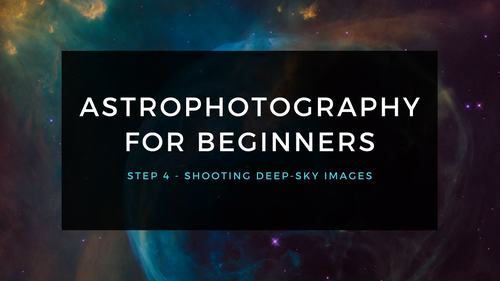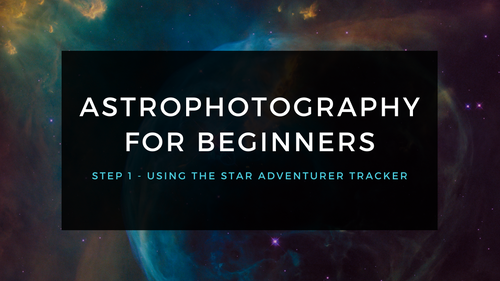

Products in the Same Family
Why Purchase from All-Star Telescope?
Free Expert Support
Whether you are a first timer needing help with setting up or an enthusiast that can't quite make that one thing work, our expert staff are ready to support your needs. With decades of knowledge and first hand experience we've been there and we can help you through it!
Stress Free, Secure Transactions
You can trust purchasing and delivery with All-Star Telescope. All of our transactions are 100% secure and Level 1 PCI DSS compliant thanks to Shopify's ShopPay platform. For additional protection, we insure 100% of the value of every shipment we make. If it get's lost during shipment, we replace it. If it gets damaged during shipment, we replace it. We make sure your product arrives exactly as you would expect it to; we promise.
We also ensure privacy protection. We never keep any of your credit card information on file and any of your personal data is stored according to our policies.
30 Day Return Policy
Buy with confidence knowing that we accept returns up to 30 days after purchase. We want you to have something you will actually use and we are confident that we keep good quality products in our store with No Junk.
Price Match Promise
Shipping around for the best price is tough, we make it easier by offering the best pricing in the market. But if you find a better price on an in-store item somewhere else we will match it!
Product Description
Antlia Venus-U filter is designed for imaging the cloud structure of Venus and Jupiter with CCD cameras on a telescope. Cloud details primarily reflect in the ultraviolet band which cannot normally be imaged using broadband filters.
The Venus-U filter uses the latest dielectric interference coating technology to achieve high transmission efficiency and exceptional isolation of the critical UV bandwidths. The filter effectively blocks the contrast damaging frequencies beyond 400nm which typically swamp the ultraviolet cloud details on camera sensors. Like the highest quality Antlia LRGB filters, the U-Venus filter minimizes halos around bright stars and increase the contrast.
Filter Usage Recommendations
- When U-Venus filter is used with a planetary camera, it is recommended to remove any protective UV-IR window in front of a color planetary camera because this filter may attenuate transmittance of the critical ultraviolet band that contains cloud details.
- The lower the frequency in the UV band, the longer will be the exposure to achieve sufficient signal in your image. The sensitivity of most sensors also decreases rapidly at shorter UV wavelengths.
- It should be noted that when using DSLR to shoot ultraviolet flowers, the camera needs to be specially modified to remove the infrared cut filter inside the camera.
- In non astronomical use, the lighting conditions may block UV transmissions e.g. the UV contents of electronic flash emission, because of a combination of lower emission at shorter wavelengths and increased absorption by the glass of the flash tube. These factors combine together to require a substantially increased exposure time (for continuous UV sources), UV intensity and ISO sensitivity as the wavelength decreases.
Note: this filter can also be used for non-astronomical applications, e.g. for general UV photography (flowers, health of plants,insects, forensics and medical imaging)
Specifications
| Model | U-Venus | Methane (CH4) |
| Size | 1.25" (Mounted) | 1.25" (Mounted) |
| Filter Thickness | 2mm +/- 0.05mm | 2mm +/- 0.05mm |
| Optical Substrate | Schott optical substrate | Schott optical substrate |
| Surface Quality | S/D (scratch/dig) = 60/40 (Refer to MIL-O-13830) | |
| Transmitted Wavefront | Lambda/4 or better | Lambda/4 or better |
| Parallelism | Less than 30 arcsec | Less than 30 arcsec |
Additional Articles, Videos, and Links

Astrophotography for Beginners Step 4: Shooting Deep-Sky Images
Taking deep sky pictures can be daunting, luckily there is an easy process to follow to allow you to get great shots! Here is the typical process for actually taking deep-sky images in the field.

Astrophotography for Beginners Step 3: Choosing Gear for Deep-Sky Imaging
Using a star tracker gains you experience with the fundamentals of deep-sky imaging. Shooting the Moon gains you experience focusing and framing through your telescope. Through your sessions you’ll...

Astrophotography for Beginners - Start Here: Getting into Astrophotography Step by Step
Shooting the night sky has never been more popular, nor easier. The choice of equipment has also never been better, or more affordable. However, as per the advice given by Dickinson and Dyer in the...

Astrophotography for Beginners Step 1: Using the Star Adventurer Tracker
By far the most economical and easiest way to capture beautiful images of the Milky Way and large deep-sky objects like the Andromeda Galaxy (shown here) is to use a star tracker. Here are steps an...

Astrophotography for Beginners Step 2: How to Shoot the Moon
Close-ups of the Moon are rewarding, and an easy way to learn to shoot through your telescope. While good results are possible with a phone camera clamped to an eyepiece (as shown below), this tuto...

